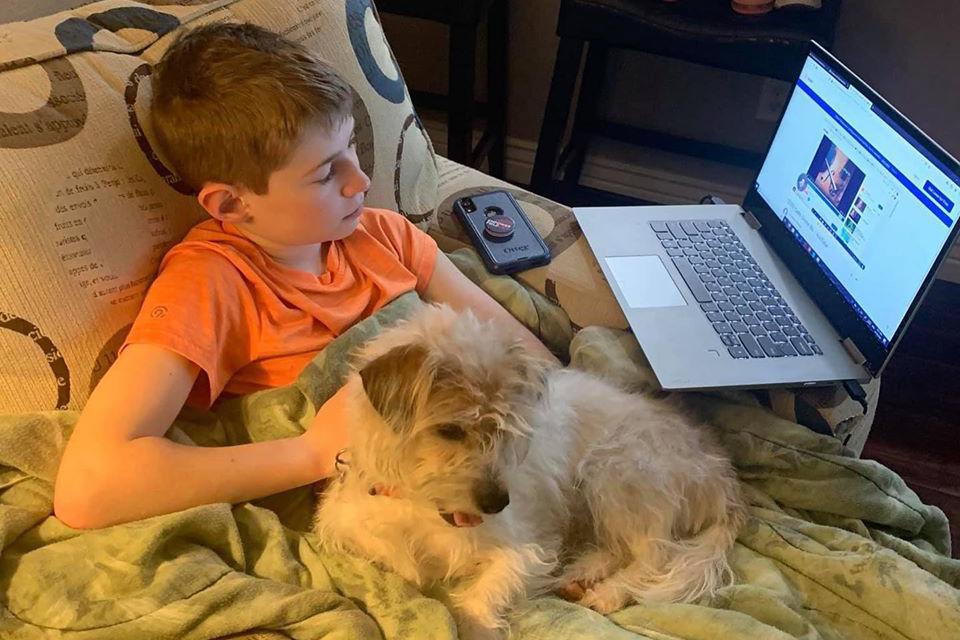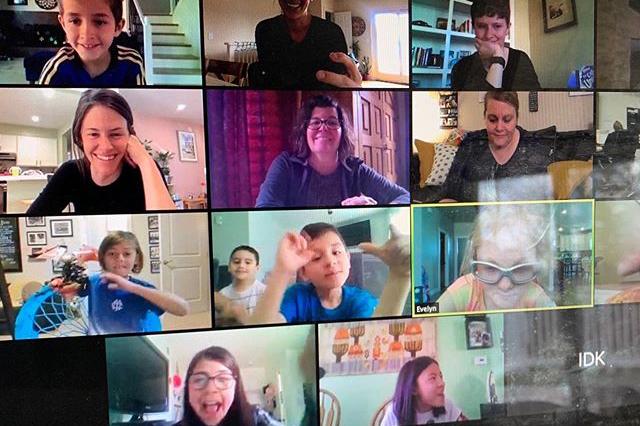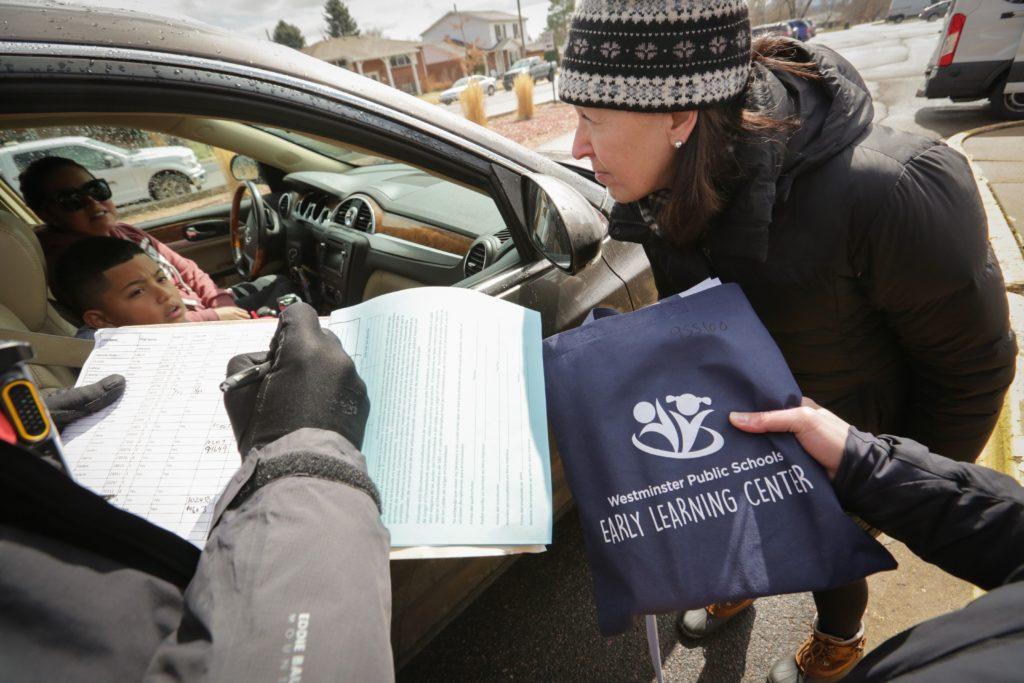
Two Colorado school district leaders a stone’s throw from the Nebraska border spoke last week about the massive, immediate paradigm shift in front of them: How were they going to suddenly provide academic instruction and food to nearly a million Colorado students, all remotely?
“It feels like we’re kind of building the plane as we’re trying to fly it up at 30,000 feet in the air,” said Kyle Stumpf, who directs the 600-student Holyoke School District.
He and Bret Miles, executive director of the Northeast Board of Cooperative Educational Services — along with 170-plus other Colorado superintendents — were preparing to try something never done before.
School district leaders were on phone calls all week long brainstorming, including one with Gov. Jared Polis last Friday. Polis had announced last Wednesday that schools would be closed until April 17, and likely will be closed the rest of the school year.
Polis’ four-week school closure order requires public and private schools to "make every effort" to provide alternative instruction to the state's K-12 students.
The order specifies three herculean tasks.
They are: Keep the meals rolling (many students in poverty rely on federally reduced-priced lunches and breakfasts), keep learning happening, and try to think about a way to use your schools as childcare centers for children of essential personnel.
Keeping the meals rolling? Check. With some bumps, districts are carrying that mandate out.
Keeping students learning? Substantially more tricky. How districts will be able to respond will be as varied as the 178 districts themselves. Jefferson County — the state’s second-largest district — was ready at the get-go, rolling out remote learning in all grades last week.
At the Rocky Mountain Deaf School in Jefferson County, this is the first time they’ve ever done remote learning. Director Amy Novotny says they had two days to plan everything.
“Everyone’s very committed to this. Teachers are very motivated and we’ve had about 95 percent student attendance for the first three days.”
Some teachers have recorded video lectures but 90 percent of the classes are live through Google Hangout or Zoom.
“For students who use American Sign Language, they usually don’t have opportunities outside of the school building to socialize so we wanted to continue to provide that,” Novotny says.
From 11:30 to noon each day, elementary students are even invited to log in and eat lunch together via Zoom.

Teachers do a modified schedule with lots more individual working built in. In addition, the school’s occupational and therapists and reading specialists work with students through Zoom.
“It’s not something we want to do forever but we realize that we really care about keeping that human connection for everyone in our building and as the world is changing, we have to make this happen, we have to make sure our students continue learning.”
Westminster Public Schools distributed more than 5,000 Chromebooks to students starting March 13. This week, while students are on spring break, teachers will be paid a stipend to continue teaching.
“We think it’s really important to continue the momentum that we made with our teachers and students over the course of the first week of closures, said Superintendent Pam Swanson.

That district had an advantage in that it is the largest district in the country to be entirely “competency based.” That means students, using district Chromebooks, advance to the next level themselves upon showing mastery of their learning content. Teachers will create customized learning content and “playlists” of academic material for students to work through.
Denver Public Schools sent out a survey Friday to students asking about tech needs at home and won’t be ready for remote learning until April 7.
In a letter to the community, Superintendent Susana Cordova noted the importance of serving all students, “including those with unique needs like our students on Individualized Education Programs, our students with disabilities, our English-language learners, and our students who do not have access to the internet at home.”
And that’s something that Denver, the largest district, and Campo — one of Colorado’s smallest near the Oklahoma and Kansas border — have in common. Superintendent Nikki Johnson says she checked in with parents last week.
“We will have to plan around some students not having internet access at all and some with limited data plans if they have to use their hotspot,” she says.
Miles, who in May will become the executive director for the Colorado Association of School Superintendents, says some school leaders estimate up to 20 percent of their students don’t have broadband access.
“Many school districts don’t even have good data about what percentage of kids have internet or computers,” he said. He said districts are all at different starting points.
One district in Miles’ northeast corner is ready to roll out remote learning already. But just 30 miles down the road, a small district doesn’t have laptops for students. All Colorado districts — because of years of deep budget cuts — have had to prioritize what their communities needed.
“They prioritized CTE — career and tech education,” Miles said. “They prioritized by having after school programs. They prioritized those same dollars in different ways”
Miles said it didn’t make sense to buy 400 Chromebooks when they couldn’t afford a tech department to maintain them. Other schools have one classroom set of computers that is rotated between classrooms. Still other principals say computers are used in class but teachers don’t know how to use them as a primary way to deliver instruction. Others are wondering how effective they can really be with remote learning.
Colorado is a “local control” state, which means the school districts will make most of the decisions around remote learning.
State officials are working to clear the path of bureaucratic red tape so districts can put all their efforts into keeping students engaged and creating “a sense of normalcy in this abnormal time,” said Commissioner of Education Katy Anthes.
Guidance on instructional options for districts, waivers on required hours and days of instructional time, and graduation requirements for students are expected to be released to districts by the middle of the week.
Colorado requires a minimum of 160 days of instructional time per year.
“We want to take that off their plates so they’re not worried about counting minutes and counting perfect attendance for students in this unusual time,” Anthes says.
The Colorado Department of Education will still seek information about how districts are engaging students so the state can learn from it and broker services to districts who don’t have capacity.
In addition, the state will be asking federal education authorities for the complete set of waivers it’s offering, including those on rules for identifying struggling schools and how they should improve.
Many districts are wondering and worrying about maintaining services for students with disabilities.
Anthes said CDE is working with federal authorities to understand what waiver options exist, such as extending learning services beyond the coronavirus crisis, or as some superintendents have suggested, allowing students with severe disabilities to continue to meet at schools with proper social distancing and fewer than ten students.
Anthes is encouraging districts to be innovative and creative and do the best they can.
“This is unprecedented and we are all learning as we are going. I have been amazingly proud and in awe of all of the work our superintendents and educators and custodians and paraprofessionals and staff are doing to support students and families during this time.”
It’s going to be hard to decide how to grade students.
Though the state has suspended state assessments and the yearly accountability grade districts get from the state (school will stay at the same grade level they were assigned for the 2019-20 school year), Miles says school leaders across the state are struggling with how accountable they should be with students.
“How much do I balance academic rigor and with understanding that some of my kids have been thrust into totally different situations where they're now head of households and they're taking care of siblings and neighbors and making meals, so what expectation can we really put out there?” Miles said.
“Am I really going to keep somebody from a graduation credit because they didn't respond to online learning when we don't have a good history of it, we don't know that we're good at it, we don't know that the kids are ready for it, we don't know that they can even get to it or what other life responsibility has been thrust upon them?”
Walt Cooper, superintendent of the Cheyenne Mountain School District, says just because a teacher knows how to use Google classrooms doesn’t mean they know how to do remote learning.
“The reality is we're never going to be able to recreate the level of learning in a remote environment that we can create in a brick and mortar school,” he said. “There's just no way.”
But he says all 17 districts in his Pikes Peak region are working cooperatively, sharing tips, tricks and resources from other districts, like a video from the Boulder Valley School District on instructing teachers in how to use “Google Hangout.”
In a conference call with superintendents Friday, the governor talked about finding other ways to get materials to students without the internet. Miles says schools will try their level best but “oftentimes, the students that don't have the broadband at home also have the parents working two jobs and you know, and they're not going to be able to bring them [to the school].”
Miles said superintendents are feverishly looking for internet deals and how to get hotspots to families. They’re being inundated with calls from remote learning vendors. But Miles says all districts will come up with a plan for remote learning.
“They'll all build a slightly different airplane and it might not look like the airplane the governor's describing, but they're going to do right kids. They're going to do right by their communities.”
Cooper says he’s telling his school staff the same thing he’s saying to parents.
He says right everyone realizes that for some students, being engaged in math lessons at home is far from the highest priority.
“There are a lot of people that are furloughed, there are a lot of people now worried about how they're going to pay next month's rent. There are a lot of people worried about where they're going to get a couple of meals a day for their kids. That typically happens in schools.
“We have to be supportive and cooperative and we'll get through this We just need to extend a measure of grace and patience to everyone around this if we're going to be successful in what we're attempting.”









